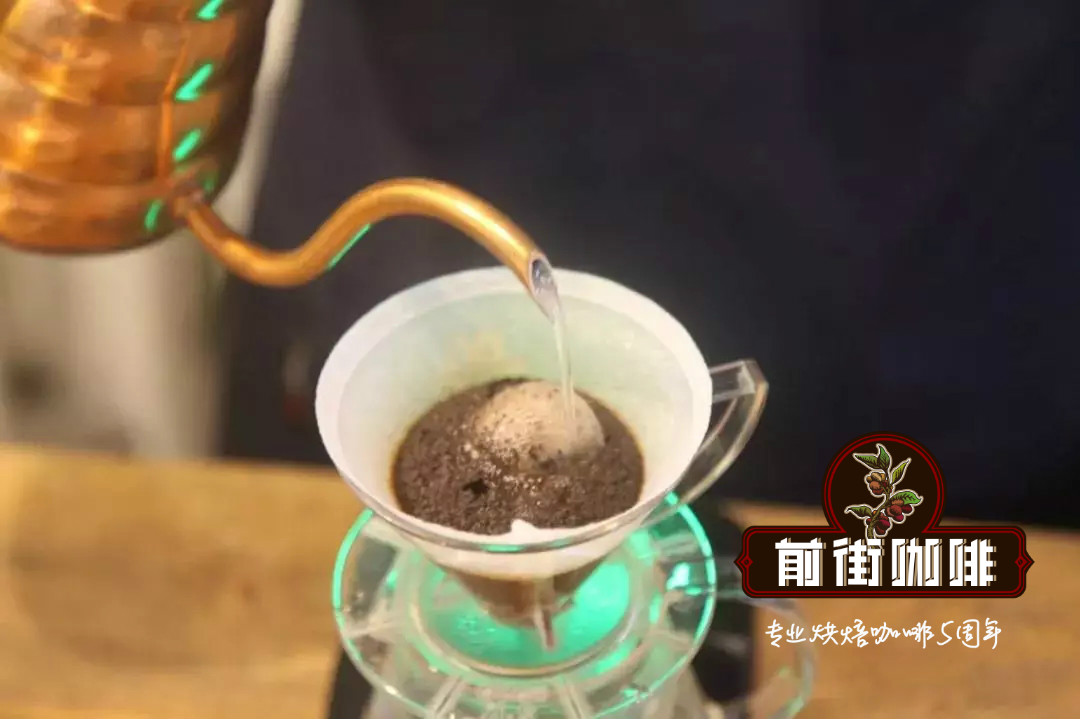Indian Coffee Budan producing area Alecon Farm Coffee Indian Coffee suitable for what kind of roasting degree?

Professional coffee knowledge exchange More coffee bean information Please pay attention to coffee workshop (Weixin Official Accounts cafe_style)
Indonesian coffee is diverse in quality, most of which are named after island sources and markets such as Sumatra, Sulawesi, Jawa or Timur. The advantage of Indonesian coffee is that most coffees are characterized by strong, restrained flavors and lively acidity. The downside is that it may also have an uncomfortable harshness or a slightly musty smell. Others display earthiness, which some coffee lovers like, while others dislike.
Coffee was brought in by pilgrims as early as the 16th century to establish the first coffee farms. You may not imagine that India produces more coffee than Ethiopia and any Central American country. There are 900,000 hectares of land for coffee beans. There are about 140,000 coffee farms in India. More than 90% of the farms have less than 10 acres. These farms are distributed in the coastal mountains of 900~ 1200 meters above sea level in the south and east. Arabica coffee varieties account for two-thirds of the rest of the Robusta species, the total output of about 440 ~ 450 thousand bags, is the fifth largest coffee producer in the world
Mention Malabar, the most common contact of Indian coffee people. The main reason for its formation is that coffee took several months to travel to Europe in ancient times. During the voyage, due to exposure to salty sea breeze and humidity, it changed into a special taste and the original fresh dark green coffee beans also became brown like mantinin. Europeans at that time liked this rich thickness and strange flavor. Today, coffee farmers with shorter voyages are trying to replicate this flavor by spending six weeks exposing their coffee to the strongest southwesterly winds of the May to June monsoon season, also known as monsoon malabar, which gives the coffee a slightly aged manning, unique taste with a strong pickled flavor, and ratings vary widely in Taiwan.
Indian coffee November to March is the harvest period, 2010 direct coffee introduced to western India 6000 feet above sea level Baba Budan Alekang farm ( Yelnoorkhan Estate), Alekang Farm has a rich natural ecology, coffee grows in fertile soil with shade, and many varieties are planted on the 1450-acre farm, mostly Kent trees.(It is an Arabica derived tree species), and it is the most primitive natural coffee farm in India in the past 10 years. It is also the most famous area for producing sun-dried beans in India. It is very different from the monsoon beans on the southern and eastern coastal mountains mentioned above. The aroma and taste are complex.
Light Roast End of Explosion (City): In light roasting, the dry aroma of coffee after grinding has a strong grape fruit aroma, and after brewing, it has a fermented flavor of sun beans. The sun beans of Alekang Farm have a fermented fruit aroma of guava, and the taste is thin. Fermented tea feels heavy. Grapefruit is a little low in acidity. Tomato? The fruit of guava is sweet, the aftertaste is slightly sweet, and the sweetness of oolong tea is equal to the tea feeling.
Full City: 1 minute at the end of the first explosion is the heaviest roasting degree of the Alekang sun beans. The aroma after coffee grinding is like adding beer to chocolate. This mixed aroma is very special. Indian sun beans are unique. Other sun beans are rare. After brewing, there is a light star anise. Liquoric spice flavor, tropical fruit banana? The sweet taste of guava is rich and smooth, and the tea is heavy. The sweet taste of sugar cane brown sugar has a faint aroma of grapefruit tea.
END
Important Notice :
前街咖啡 FrontStreet Coffee has moved to new addredd:
FrontStreet Coffee Address: 315,Donghua East Road,GuangZhou
Tel:020 38364473
- Prev

The Katim Yunnan Raw Bean Competition has a high score, but it is difficult to stand out in the international competition.
Professional coffee knowledge exchange more coffee bean information please follow the coffee workshop (Wechat official account cafe_style) US CQI senior consultant Ted Lingle said that Yunnan Katim species at a high altitude of more than 1500 meters, can increase aroma and alcohol, coupled with appropriate post-processing, the color of the taste spectrum will not lose to the traditional old varieties. Please pay attention to the following facts: 1. Although there are many countries
- Next

What is Colombian Cuka Coffee? What are the flavor characteristics of Colombian Kuka coffee?
Professional coffee knowledge exchange for more information about coffee beans, please follow the coffee workshop (Wechat official account cafe_style) Cauca, Colombia, about 1500-2100 meters above sea level. The changeable mountain terrain and climate, slow coffee production but also created this rich flavor, balanced flavor of Colombian coffee. The producing area is surrounded by high mountains and majestic mountain barriers.
Related
- Detailed explanation of Jadeite planting Land in Panamanian Jadeite Manor introduction to the grading system of Jadeite competitive bidding, Red bid, Green bid and Rose Summer
- Story of Coffee planting in Brenka region of Costa Rica Stonehenge Manor anaerobic heavy honey treatment of flavor mouth
- What's on the barrel of Blue Mountain Coffee beans?
- Can American coffee also pull flowers? How to use hot American style to pull out a good-looking pattern?
- Can you make a cold extract with coffee beans? What is the right proportion for cold-extracted coffee formula?
- Indonesian PWN Gold Mandrine Coffee Origin Features Flavor How to Chong? Mandolin coffee is American.
- A brief introduction to the flavor characteristics of Brazilian yellow bourbon coffee beans
- What is the effect of different water quality on the flavor of cold-extracted coffee? What kind of water is best for brewing coffee?
- Why do you think of Rose Summer whenever you mention Panamanian coffee?
- Introduction to the characteristics of authentic blue mountain coffee bean producing areas? What is the CIB Coffee Authority in Jamaica?

